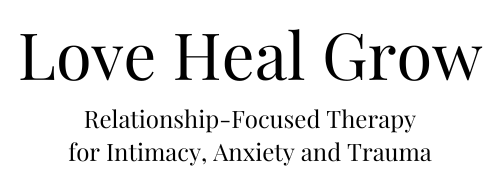
Have you ever had a thought pop into your head and it scared you because you didn’t know where it came from and it was distressing? That’s an intrusive thought. These are thoughts that seem to come out of nowhere, often accompanied by distress. These are not simply unbidden thoughts; an intrusive thought goes against your will, values, or desires.
If you’ve ever had an intrusive thought, you know how disorienting it can feel. These thoughts might not reflect your true desires or values, but they can still be deeply troubling. The good news is that you’re not alone. Many people experience intrusive thoughts, and there are ways to manage and reduce their impact on your mental well-being.
Intrusive thoughts vary widely in content, but understanding the different types and their potential causes can help you gain perspective. Once you recognize the nature of these thoughts, you can begin exploring strategies to reduce their frequency and intensity.
Different Types of Intrusive Thoughts
Intrusive thoughts come in many forms, and the content of these thoughts can be highly varied. Below are some common categories of intrusive thoughts and examples that might resonate with your own experience.
Harm-Related Intrusive Thoughts
Harm-related intrusive thoughts involve fears about causing harm to yourself or others. These thoughts can be disturbing, as they often present scenarios that go against your moral code. For example, you might have an intrusive thought about hurting someone close to you, even though you would never act on it.
These thoughts are common in individuals with anxiety or obsessive-compulsive disorder (OCD). You may feel compelled to avoid situations where you fear you could cause harm, even though the chances of acting on these thoughts are extremely low. The discomfort arises from the thought itself, not from any genuine desire to cause harm.
Sexual Intrusive Thoughts
Sexual intrusive thoughts involve unwanted thoughts about sexual behaviors or situations that don’t align with your actual preferences. These thoughts can feel embarrassing or unsettling, especially if they involve taboo subjects. For example, someone might experience an intrusive thought about an inappropriate sexual situation, even though they have no interest in pursuing it.
It’s important to understand that sexual intrusive thoughts are not an indication of your desires or intentions. Like other types of intrusive thoughts, they are often a result of anxiety and can become more persistent when you try to suppress them.
Religious or Moral Intrusive Thoughts
For some people, intrusive thoughts take the form of fears about violating religious or moral codes. These thoughts might involve blasphemy, committing sins, or being judged by a higher power. Someone experiencing these types of thoughts might worry that they’re committing a moral wrong simply by having the thought in the first place.
Religious or moral intrusive thoughts can lead to compulsive behaviors, like excessive praying or seeking reassurance, in an effort to “undo” the thought. While these behaviors may provide temporary relief, they often reinforce the cycle of anxiety and intrusive thinking.
Health-Related Intrusive Thoughts
Health-related intrusive thoughts involve a preoccupation with physical health and the fear of having or developing serious illnesses. For example, you might have an intrusive thought that you’re developing a life-threatening disease, even if there’s no evidence to support that fear.
These thoughts can lead to excessive checking behaviors, like repeatedly visiting doctors or searching for symptoms online. This cycle can create more health anxiety, making the thoughts more persistent over time.
Aggressive Intrusive Thoughts
Aggressive intrusive thoughts often involve unwanted, violent images or impulses, such as harming others or engaging in destructive behaviors. Even though these thoughts may feel shocking or disturbing, they are not a reflection of your true intentions. You might have an intrusive image of a violent act that feels entirely out of character for you.
These types of thoughts are common in anxiety disorders and OCD, and people who experience them are often highly distressed because the content contradicts their core values.
Causes of Intrusive Thoughts
Intrusive thoughts are typically linked to underlying stress, anxiety, or trauma. They often occur in individuals dealing with high levels of emotional or psychological tension. While intrusive thoughts are common, they can become more frequent and distressing under certain circumstances.
One of the main reasons intrusive thoughts persist is the human brain’s tendency to get stuck in loops of worry or anxiety. When you have an unwanted thought and try to push it away, your brain may actually latch onto it even more. This can create a cycle where the more you resist the thought, the more it seems to return.
Conditions like OCD, generalized anxiety disorder, and post-traumatic stress disorder (PTSD) can make you more prone to intrusive thoughts. For example, trauma survivors may experience flashbacks or disturbing images related to their past experiences.
How to Reduce Intrusive Thoughts
While intrusive thoughts can feel overwhelming, there are effective strategies you can use to reduce their impact on your daily life. The key is to approach these thoughts with curiosity rather than fear, and to develop healthy coping mechanisms that help you manage them without getting stuck in the cycle.
Acknowledge the Thought Without Judgment
The first step in reducing intrusive thoughts is to acknowledge their presence without attaching judgment to them. Instead of reacting with fear or trying to push the thought away, simply notice it and recognize that it’s just a thought, nothing more. This helps you break the cycle of trying to control or suppress the thought, which often makes it worse.
You might say to yourself, “This is an intrusive thought. It doesn’t define me, and I don’t need to act on it.”
Practice Mindfulness
Mindfulness techniques can be helpful for managing intrusive thoughts. By staying present and focusing on your breath or the sensations in your body, you can reduce the grip that these thoughts have on your mind. Mindfulness encourages you to observe your thoughts without getting caught up in them.
Challenge Your Thinking Patterns
Cognitive-behavioral therapy (CBT) techniques can help you challenge the thinking patterns that contribute to intrusive thoughts. This involves identifying the irrational or distorted beliefs that fuel the thoughts and learning to reframe them.
Limit Reassurance-Seeking Behaviors
One common response to intrusive thoughts is seeking reassurance from others or engaging in compulsive behaviors to “neutralize” the thought. While this may provide short-term relief, it often reinforces the cycle of intrusive thinking. Instead, practice tolerating the uncertainty that comes with these thoughts and resist the urge to seek reassurance.
Get Professional Support
If intrusive thoughts are interfering with your daily life, it may be time to seek professional support. A therapist can help you understand the root causes of your intrusive thoughts and provide guidance on managing them effectively. A professional can also help you identify whether your intrusive thoughts are related to an underlying condition and develop a tailored treatment plan.
Take Control of Your Thoughts
Intrusive thoughts can feel unsettling, but they don’t have to control your life. By acknowledging them, practicing mindfulness, and seeking support when needed, you can reduce their impact and regain a sense of control. If you’re struggling with intrusive thoughts and want to explore ways to manage them, consider scheduling a session with a Love Heal Grow therapist. We’re here to help you navigate these challenges with compassion and provide the support you need to move forward with confidence.
























